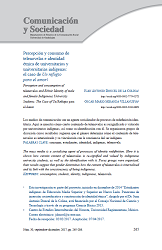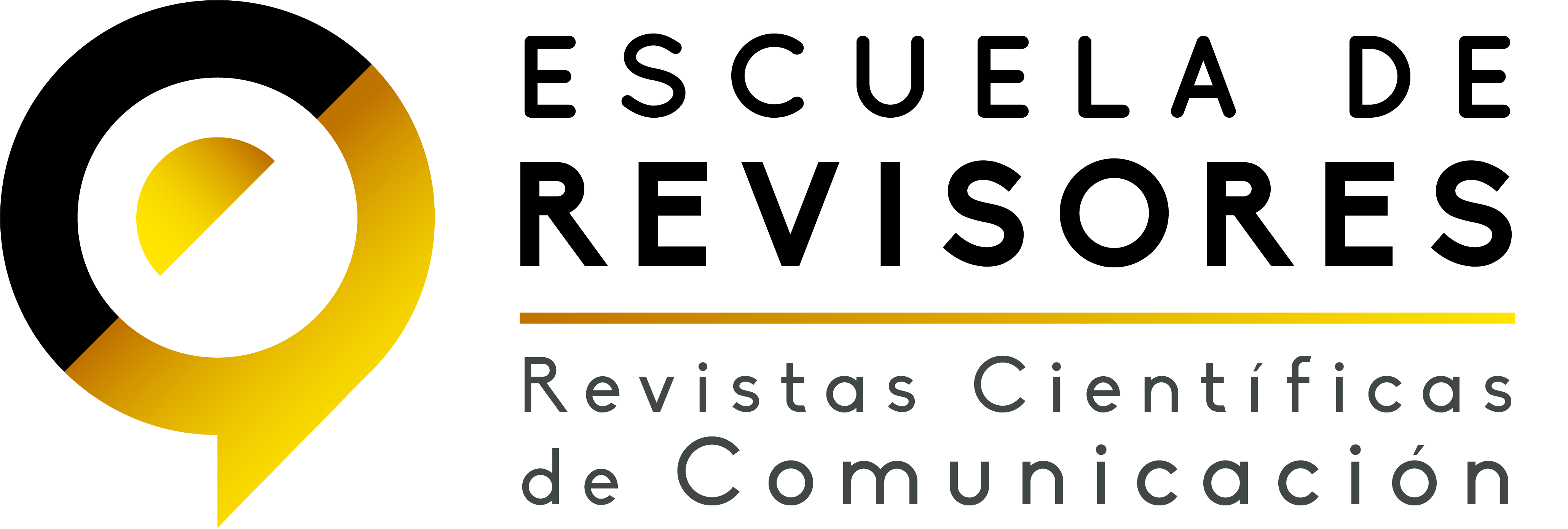Percepción y consumo de telenovelas e identidad étnica de universitarios y universitarias indígenas: el caso de Un refugio para el amor
DOI:
https://doi.org/10.32870/cys.v0i30.6506Palabras clave:
Consumo, Estudiantes, Identidad, Indígenas, TelenovelasResumen
Los medios de comunicación son un agente socializador de procesos de redefinición identitaria. Aquí se muestra cómo cierto contenido de telenovelas es resignificado y valorado por universitarios indígenas, así como su identificación con él. Se organizaron grupos de discusión cuyos resultados sugieren que el género determina cómo el contenido de telenovelas es interiorizado y su vinculación con la conciencia del ser indígena.Descargas
Citas
Alasuutari, P. (2004). Social theory and human reality. Londres: Sage Publications.
Alasuutari, P. & Qadir, A. (2014). National Policy-Making: Domestication of Global Trends. Nueva York: Routledge.
Althusser, L. (1971). Lenin and Philosophy and Other Essays. Londres: Monthly Review Press.
Berger, P. L. & Huntington, S. P. (2002). Many globalizations: Cultural diversity in the contemporary world. Nueva York: Oxford University Press.
Bloor, M., Frankland, J., Thomas, M. & Robson, K. (2001). Focus Groups in Social Research. Londres: SAGE Publications Ltd.
Bourdieu, P. (1984). Distinction: A Social Critique of the Judgement of Taste. Londres: Routledge/ Kegan Paul.
Campbell, C. (1992). The Desire for the New. Its Nature and Social Location as Presented in Theories of Fashion and Modern Consumerism. En R. Silverstone & E. Hirsch (Eds.), Consuming Technologies: Media and Information in Domestic Spaces (pp. 48-64). Londres: Routledge.
Doncel, J. (2016a). Identidad étnica de preparatorianos universitarios indígenas en México ante las representaciones mediáticas de "lo indígena". Corpus, 6 (1), 1-31.DOI: 10.4000/corpusarchivos.1553
Doncel, J. (2016b). Significaciones de mass media en preparatorianos y universitarios indígenas emigrados a Monterrey. Estudios Fronterizos, 17 (34), 137-158.DOI: 10.21670/ref.2016.34.a08
Doncel, J. (2017). Procesos de identificación a través del consumo de telenovelas por parte de preparatorianas y universitarias indígenas emigradas al Área Metropolitana de Monterrey. En E. Hernández (Coord.), Donald Trump y otros retos. Ciudad de México: Creativa Independiente.
Durkheim, E. (1984). The Division of Labour in Society. Basingstoke: Macmillan.
Foucault, M. (1978). The History of Sexuality, volume 1, An Introduction. Nueva York: Pantheon Books.
Gramsci, A. (1999). Selections from the Prison Notebooks of Antonio Gramsci. Londres: Lawrence and Wishart.
Gurevitch, M., Levy, M. & Roch, I. (1991). The Global Newsroom: Convergences and Diversities in the Globalization of Television News. En P. Dahlgrem & C. Spark (Eds.), Communication and Citizenship: Journalism and the Public Sphere in the New Media Age (pp. 195-216). Londres: Routledge.
Hall, S. (1980). Encoding/Decoding. En S. Hall, D. Hobson, A. Lowe & P. Willis (Eds.), Culture, media, language. Working Papers in Cultural Studies, 1972-79 (pp. 128-38). Londres: Hutchinson.
Hall, S. (2010). Sin garantías. Trayectorias y problemáticas en estudios culturales. Popayán: Envión Editores.
Krippendorff, K. (2004). Content Analysis. An Introduction to Its Methodology. Londres: Sage Publications.
Lechner, F. & Boli, J. (2005). World culture: Origins and consequences. Oxford: Blackwell Publishing. DOI: 10.1002/9780470775868
Liebes, T. (1996). Notes on the struggle to define involvement in television viewing. Réseaux, 1 (4), 35-46.
Livingstone, S. & Lunt, P. K. (1994). Talk on television: Audience Participation and Public Debate. Londres: Routledge.
Marx, K. & Engels, F. (2010). Karl Marx & Frederick Engels. Collected Works, vol. 5. Great Britain: Lawrence & Wishart.
Miranda, O. (2014). El marco de la domesticación. Reconsiderado. Estudios Sobre las Culturas Contemporáneas, 20 (39), 129-148.
Miranda, O. (2016). Formas de interacción entre jóvenes de origen étnico en Monterrey con relatos audiovisuales extranjeros de ficción mediados por los medios de comunicación. Palabra Clave, 19 (1), 211-239.
Morley, D. (2007). Media, Modernity and Technology: The Geography of the New. Nueva York: Routledge.
Morley, D., & Silverstone, R. (1990). Domestic Communication. Technologies and Meanings. Media, Culture & Society, 12 (1), 31-55.
Olvera, J., Doncel, J. & Muñiz, C. (2014). Indígenas y Educación. Diagnóstico del nivel medio superior en Nuevo León. Monterrey: U-ERRE/Fondo Editorial Nuevo León/UANL.
Siapera, E. (2010). Cultural Diversity and Global Media. The Mediation of Difference. Sussex: Wiley-Blackwell.
Silverstone, R., Hirsch, E. & Morley, D. (1992). Information and Communication Technologies and the Moral Economy of the Household. En R. Silverstone & E. Hirsch (Eds.), Consuming technologies (pp. 15-31). Londres: Routledge.

Descargas
Publicado
Cómo citar
Número
Sección
Licencia
Los autores/as que publiquen en esta revista aceptan las siguientes condiciones:
De acuerdo con la legislación de derechos de autor, los autores conservan los derechos de autoría y otorgan a Comunicación y Sociedad el derecho de primera comunicación pública de la obra. Comunicación y Sociedad no realiza cargos a los autores por enviar y procesar artículos para su publicación.
Los autores/as pueden realizar otros acuerdos contractuales independientes y adicionales para la distribución no exclusiva de la versión del artículo publicado en Comunicación y Sociedad (por ejemplo incluirlo en un repositorio institucional o publicarlo en un libro) siempre que indiquen claramente que el trabajo se publicó por primera vez en Comunicación y Sociedad.

























